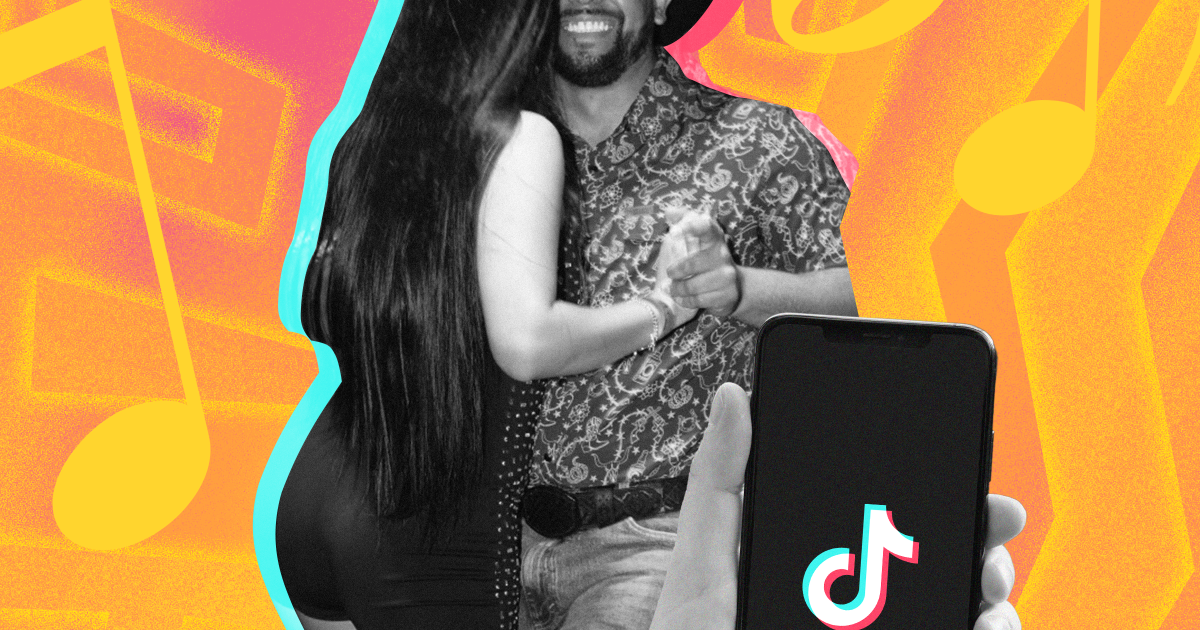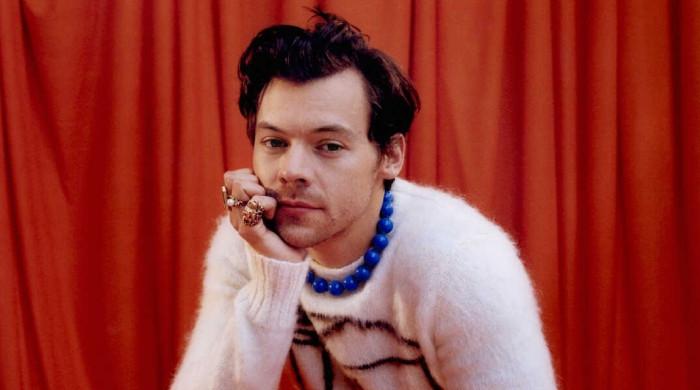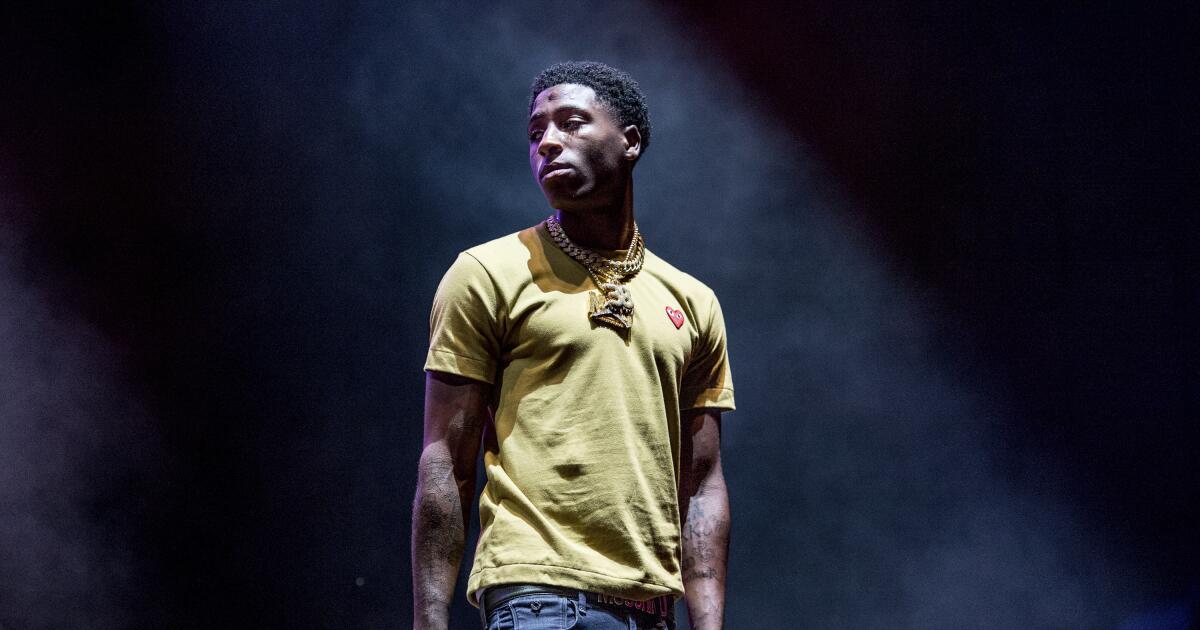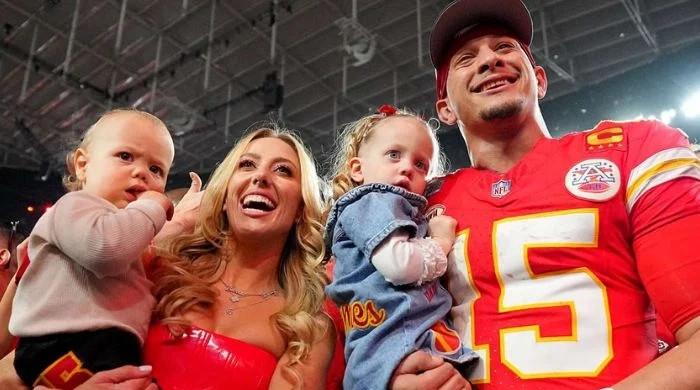Most Thursdays, Danny Ramirez begins his weekly routine: a new haircut, a beard trim and a boot shine. But he's not getting ready for a date or a night out with friends.
It’s all part of the 31-year-old’s ritual before heading to weekend balls, or Mexican dance gatherings, where his job is to lead dancers onto the floor with dizzying norteño moves in a whirlwind of cheek-to-cheek hugs with random partygoers. The Sylmar-based TikTok influencer is part of a growing spectacle in ballroom culture, drawing new, younger crowds with his foot-sliding.
“We are there to lighten the mood,” Ramirez said.
At venues across the country, women are lining up to dance with Ramirez, whose hypnotic partnered gyrations to norteño saxophone music have earned the former construction worker more than half a million followers on TikTok, mostly young dancers eager to pick up new moves.
As clubs and dance studios hope to attract some of their massive social media followings to their venues, these dance influencers are receiving the same star treatment as the night's norteño or banda act, often appearing alongside the artists on promotional flyers.
“There are a lot of people who follow us to different cities,” Ramirez said. “In a way, we give people another reason to attend these events.”
It’s still a bewildering time for Ramirez, a musical theater lover and former competitive entertainer who moved to the U.S. three years ago from Zacatecas, Mexico, in search of a better life. Since devoting himself full-time to content creation, he’s become something of a dance star, with club promoters taking him dancing in more than 25 states, including Kansas, Tennessee and South Carolina.
“I hope our movement can touch every corner of the United States so that our community feels proud of our Mexican culture,” Ramirez said.
That has been the case for venues like the Palacio Event Center in New Castle, Delaware, which are known for hiring influencers to attract dancers to their balls in a state where Latinos make up 100% of the population. Less than 10% of the total population.
“I started to see that there were people who were getting a huge amount of attention on social media,” said Edwin Velasco, marketing promoter for Palacio Event Center.
Velasco, who studied business administration in college, wanted to fill the ballroom. After seeing other nearby venues sell out on nights when they invited social media personalities, she decided to reach out to popular influencers and began promoting them at the same venue. flashy flyers showcasing the main northern or band act of the night.
“Once we started bringing in influencers, we started to notice that there was a younger audience,” said Velasco, 24. “I actually see a lot of my friends hanging out with their parents. It’s fun.”
According to a Study 2023 by Living nationSocial media fuels fan interest: About 90% of live music attendees agree that seeing live music content on social media makes them want to attend shows. Taking a photo with a famous TikTok dancer while listening to a live norteño band feels like an added perk for dance-goers.
“It’s like bringing a little celebrity into a club,” Velasco said. “These guys get hundreds and millions of views, and people want to see them.”
Jasmin Goodwin had never attended a ball before 2021, but as an experienced dancer, she quickly picked up the steps. Gradually, she amassed over 705,000 followers on TikTok and distinguished herself by flashing her white smile on camera and wearing bright outfits. Norteño dancers tend to have a more serious face and less flashy Western attire.
But the idea of flying to locations to promote weekend parties was initially daunting for the Los Angeles local, who had a steady job as a bank manager's assistant and viewed her social media videos as a mere hobby.
“It was something new where [venue promoters] “We bring people from out of state to these dances,” Goodwin said. “I’m not going to miss work for this.”
However, after embarking on weekend getaways to places in Florida and Illinois, she quickly paid off her car loan, prompting the 27-year-old to quit her job at the bank. Since then, she has been going on dates every weekend.
Those who are confident enough to lead her on the dance floor, some of whom have been childrenThey often record videos of the sessions and post them on their own social media to get views and likes.
“A lot of young people have social media like TikTok, and I feel like [we‘ve] “It inspired them to start going out to dances,” she said.
It's comforting for Goodwin, who still remembers how embarrassed her chambelanes were to dance at her quinceanera. Now, she's noticed an increase in huapango dancea faster, livelier northern rhythm with two alternating steps and an occasional hip movement that can be done paired either only —which she dominates.
“It’s a healthy pastime,” Goodwin said. “It keeps them off the streets, away from being at home on their electronics, watching TV and being jerks.”
David Cruz, owner of Fairytale Dance, a quinceañera choreography studio in Santa Fe Springs founded in 2008, believes social media influencers are setting the tone for a new era of dance culture.
“Whatever style influencers show in their videos is the style people want to copy,” Cruz said.
The dance instructor started hosting. Free weekly huapango classes This year, for teenagers, she is looking to meet the growing interest of the community. Most of her quinceañera clients ask her for choreographies for huapangos, tribal dance or banda, and she also uses this tutorial to find male chambelanes as possible dancers for her company.
It's a nostalgic moment for the 38-year-old, who grew up during the breaktoDita The hype that swept the dance floors of Southern California in the early 1990s with a series of back-breaking curves and snake footworkelements that have been revived in recent years as young people seek to individualize their style.
“Many of these young people are seen dancing huapango and going to rodeos,” Cruz said. “Now the kids wear their boots to school or their jeans and starched blue jeans.”
When he was 7, Cruz was in a dance group, El Sheriff de Chocolate, named after the Bronco-inspired song about an enveloping universe of candy. On weekends, Cruz would show off his twists or jumps against other quebraditas groups, each with their own dance style and dress code, in Homes, salons and warehouses in Los Angeles and Orange counties..
“I used to make fun of people who liked banda music,” teenager Ricardo Contreras said in a 1994 Times Interview“But then I went to a party, saw all the pretty girls and then went out and bought the boots and the hat.”
Cruz suspects that romantic allure has persisted through time and on the dance floor. If dancers can get their partner to spin just right, they may be able to seduce her, too.
“With these styles, there is a possibility that [teens] They can get their [partner’s] “The number increases after they learn to dance well,” Cruz said.
Cruz hopes that this youthful interest in dance can continue, especially after experiencing the calm after the quebradita of the late 1990s.
“From the 90s to the early 2010s, we lost people who wanted to show their Mexican side,” Cruz said. “Now, seeing someone in their jeans and boots on any given day at the mall is cool.”
Glossary
- Dances:Mexican dance gatherings, usually held with live music in large venues such as the Pico Rivera sports stadium.
- Jaripeos:a Mexican rodeo with live music and animals, often outdoors.
- Northerners (music): A Mexican polka-like ballad with guitars, totoloche, and accordion, originating in the states of Nuevo León and Tamaulipas in northern Mexico. A popular subgenre is Northern music-saxwhich includes the saxophone as a central piece (popularized by Conjunto Primavera).
- Northerners (dance):A swinging two-step with a slight knee bounce that follows the bass in norteño music (created by totoloche instrumentation).
- Huapango:A fast, upbeat northern rhythm with two alternating steps and occasionally a hip movement that can be done in pairs or solo. The movement comes from Huasteca music, which originated in the Gulf of Mexico region in states such as Veracruz, Tamaulipas and San Luis Potosí, but has also been incorporated into northern dance.
- Quebradita:A series of backbending twists or jumps that can be performed alone or with a partner.
- Band music:Instrumentation with many woodwind instruments (clarinet) and brass instruments from Sinaloa (Banda el Recodo, for example)
- Cumbia banda (northern cumbia):A subgenre of banda that often includes keyboard, synthesizer, or band (Grupo Frontera, for example)
- Tribal: a synthesized techno-banda beat with cumbia and banda originating in Mexico City (think extremely long pointy boots) (3BallMTY, for example)












